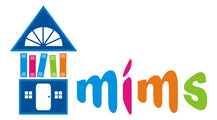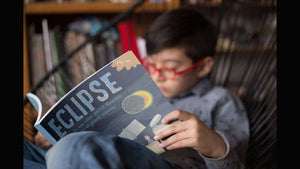Reading Grade Levels: Lexile Levels
At Mims House, we have all our books evaluated by Metametrics to determine the reading grade levels.
Reading Grade Levels: Uses and Misuses
- Uses: Choose best book for reader for leisure reading or for curriculum needs.
- Misuses: Preventing kids from reading up or reading down. Restricting their reading to a narrow range of reading levels.
The reading level of a children's book is important to consider when choosing a great book, whether reading for pleasure or reading in a classroom. If you give a child a book that is too difficult, they won't be able to read it or they'll struggle through it and not understand. Worse, they may decide they don't like reading.
But this is a simplistic way of looking at reading levels. If a child is motivated to read, then they'll make the effort to read. Witness all the second grade kids who have read Harry Potter! At least, they wanted to read it and tried.
Always remember that there are many different ways to score a book's reading level. Right now, most schools look at the Lexile measure, but there are many others. The different tools to measure grade reading level may or may not agree. Also, the division between grade levels is arbitrary. When a book is near the score to push it to the next level, it could really go either way. Lexile says that 2nd-3rd grade reading levels are 430-700L. But if a book has a 710L, it's probably easy for the 2nd/3rd grader to read. Testing a book's reading level is not a hard and fast, absolute science.

Uses of Reading Grade Levels
1) Give a child the just right reading level. This is usually when they can read with 80-90% accuracy so that they understand the text, but are challenged some to read more difficult work.
2) Choose the right books for your curriculum teaching. If you plan to read aloud, you can choose books with higher reading levels because kids will likely understand it (even if they couldn't decode the written text). The reading level will help teachers decide if they'll read aloud or assign student reading.
Misuses of Reading Grade Levels
1) Not allowing a child to read a lower reading level book. I once volunteered in a school library and witnessed one child recommending a book to another. The second child looked at the book, and shrugged. "No," she said, "I'm above that reading level."
This practice means kids miss out on many amazing books! If they can only read their "reading level" and nothing below that, we move them through the world of children's literature too fast. At every level, there are hundreds of great books that shouldn't be missed. If you insist that a student only read at a certain level and ABOVE, they'll never have a chance to explore the breadth and depth of children's literature. What a shame.
2) Prevent a motivated child from attempting to read a book. Likewise, it's a shame to prevent a child from "reading up" a level. If a person is motivated, they'll figure out for themselves if the struggle is worth it. Often, it is worth struggling through a difficult text.
Mims House Books Reading Levels
Most of our books fall within the 2nd to 5th grade reading levels. Check out these:




1 comment
I am a teacher. A few years back I taught remedial reading. A student came to me in tears. She wanted to read a book and her English teacher wouldn’t let her because it was above her level. This was a sixth grader. I put the book on my shelf and told her she could read it in my room. I watched her keep a log of words she didn’t know and look them up. She asked for clarification if something didn’t make sense. No amount of talking to this teacher helped. This child finished the book and went on to another recommended. Her reading scores improved. She was able to read books of interest to her, even if it was difficult. It was a win-win for her. She loved reading and her reading improved.